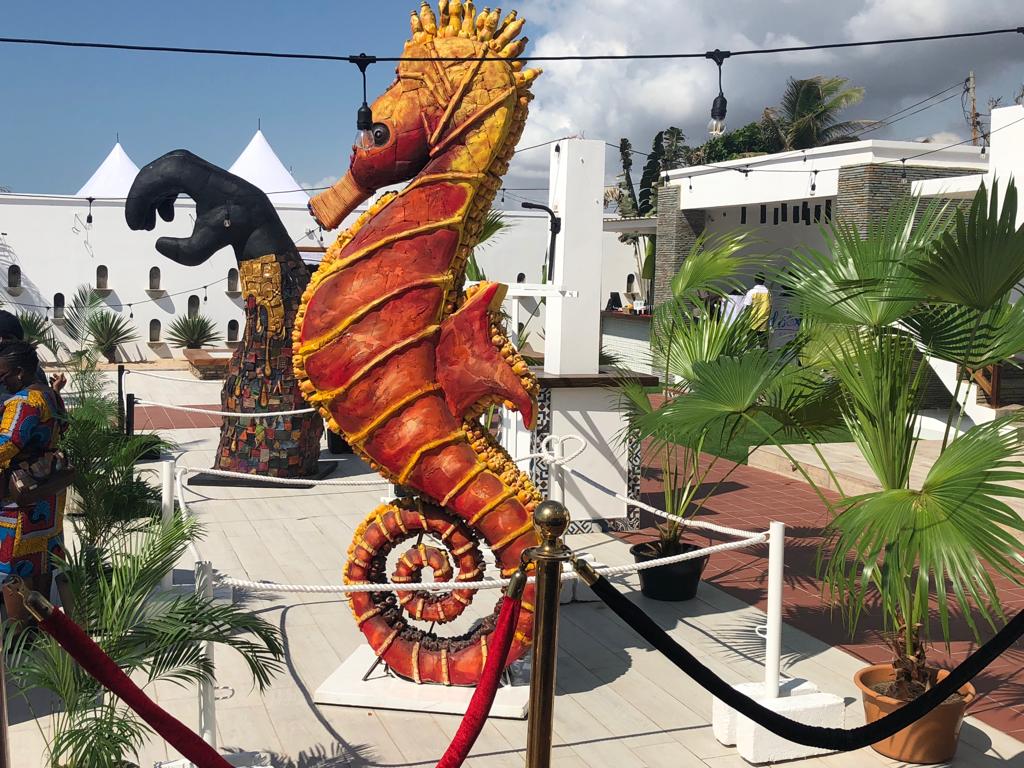Campaign against Plastic Pollution
January 10, 2019
Key Facts:
Plastic pollution is a global crisis, with millions of tons of plastic waste entering our oceans and landfills every year.
Recognizing the severity of this issue, Accent & Art decided to leverage their expertise in art to inspire change.
The organization believed that transforming plastic waste into beautiful art pieces would not only raise awareness but also promote recycling and sustainable living.

Interested?
Book a time to speak to a member of our team!
Accent & Art's Campaign Against Plastic Pollution: Transforming Waste into Masterpieces
Accent & Art is dedicated to raising awareness about environmental issues through art. In 2019, we launched a groundbreaking campaign to combat plastic pollution by using recycled materials to create works of art. This case study explores how Accent & Art executed their campaign and the impact it had on both the environment and the community.
Introduction
Every minute, every single day, the equivalent of a truckload of plastic enters our oceans. In the name of profit and convenience, corporations are literally choking our planet with a substance that does not just “go away” when we throw it in a bin. Our oceans bear the brunt of our plastic epidemic; up to 12.7 million pieces of plastic end up in them every year. This miracle material has made modern life possible, but more than 40% of it is used just once and ends up choking our waterways.
Meanwhile, ocean plastic is estimated to kill millions of marine life every year, wreaking havoc on the food chain. At A&A, our call to action is to highlight this issue and press policymakers to follow suit in Rwanda and, most recently, Kenya, in banning plastic. As creatives, our role is to bring this issue to light by using art as a medium for conversation on all fronts.
Prince Charles, during his visit to Ghana, spoke passionately about seeing his grandkids grow up in a much better world devoid of plastic pollution. As head of the Commonwealth, it is our wish that his voice is heard and that our respective governments will recognize the urgency of tackling this menacing challenge.

Strategy
Accent & Art’s campaign against plastic pollution was a multi-faceted effort:
a. Material Collection: The organization partnered with local recycling centers and businesses to collect plastic waste, including bottles, bags, and packaging materials. These materials were carefully sorted and cleaned to prepare them for use in art projects.
b. Artist Collaboration: Accent & Art enlisted local artists to lead the creative process. These artists were chosen for their ability to work with unconventional materials and their passion for environmental conservation.
c. Community Engagement: The campaign engaged the local community by organizing workshops and art classes focused on using recycled materials. These events helped spread awareness about plastic pollution and encouraged people to get involved.
d. Art Exhibition: The culmination of the campaign was an art exhibition featuring the works created from recycled plastic materials. This exhibition aimed to inspire change and spark conversations about the environmental impact of plastic waste.
Execution & Impact
Accent & Art’s campaign unfolded over the course of a year, with several key milestones:
a. Material Collection Drives: Volunteers organized plastic collection drives in neighborhoods, schools, and parks. They collected a significant amount of plastic waste, including bottles, containers, and discarded toys.
b. Artist Workshops: Local artists hosted workshops demonstrating how to transform plastic waste into art. These workshops attracted participants of all ages and skill levels.
c. Community Art Projects: Accent & Art initiated community art projects in public spaces. They created sculptures, installations, and murals using recycled plastic materials. These projects served as visual reminders of the campaign’s message.
d. Art Exhibition: The art exhibition, titled “From Waste to Wonder,” featured over 100 artworks created from recycled plastic. It garnered significant attention from the media, local businesses, and art enthusiasts.
Accent & Art’s campaign achieved several notable outcomes:
a. Increased Awareness: The campaign raised significant awareness about plastic pollution in the local community. Many people began to see plastic waste not just as trash but as a valuable resource for creative expression.
b. Plastic Reduction: The recycling rate in the community increased by 30% during the campaign, indicating a tangible reduction in plastic waste entering landfills.
c. Behavioral Change: People started to adopt more sustainable practices, such as reducing their use of single-use plastics and actively participating in recycling programs.
d. Community Cohesion: The campaign brought the community together, fostering a sense of shared purpose and pride in their efforts to combat plastic pollution.
e. Artistic Growth: Local artists involved in the campaign developed new skills and expanded their portfolios, using recycled materials as a medium for their future work.
Conclusion
Accent & Art’s campaign against plastic pollution, using recycled materials to create works of art, successfully combined art and environmental activism. Through the creative transformation of plastic waste, they not only increased awareness but also inspired behavioral change within the community. The campaign serves as a testament to the power of art as a tool for environmental advocacy, offering a model for other organizations to follow in the fight against plastic pollution.
